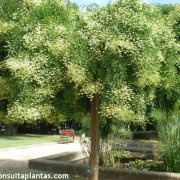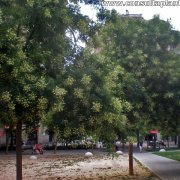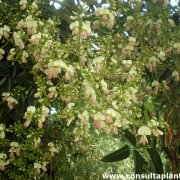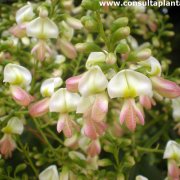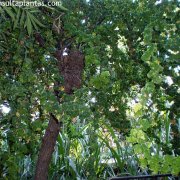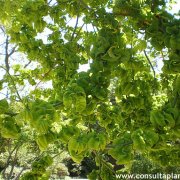Care of the tree Sophora japonica or Japanese pagoda tree |
|
The genus Sophora, family Fabaceae, includes 40 species of trees and shrubs native to almost all continents. Some species are: Sophora japonica, Sophora toromiro, Sophora macrocarpa, Sophora longicarinata. Common names: Japanese pagoda tree, Chinese scholar tree, Pagoda tree. This species is native to China. They are deciduous trees, very similar to Robinia, with cracked, dark brown bark. They have attractive foliage made up of 25 cm (9.84") long odd-pinnate leaves, of an intense green color and pointed at the end of the leaflets (in Robinia they are rounded). The flowers appear in terminal clusters, can be purplish or cream in color and are butterfly-shaped. They bloom in summer and produce pod-shaped fruits that can be decorative. This moderately growing tree is used as a shade tree in gardens (isolated specimens) and in streets and public parks. Japanese pagoda tree is ideal for gardens by the sea and for cities. Sophora japonica needs exposure to full sun or light shade. It resists frost. Chinese scholar tree can grow in poor, calcareous soils but prefers deep, well-drained soils. Water moderately, waiting until the soil has dried; it's resistant to drought. Sophora japonica blooms more profusely in dry soils. Pagoda tree does not need pruning but the guide is usually cut so that the plant develops horizontally. It accepts light pruning to keep it compact. Fertilize in autumn with manure or with humus. Sophora japonica is quite resistant to pests but can suffers cryptogamic diseases if there is excess watering or if the climate is very humid. Japanese pagoda tree is propagated from seeds sown in a protected nursery outside; seedlings should overwinter in a greenhouse. |
Images of the tree Sophora japonica or Japanese pagoda tree |
Find plants
Sophora japonica or Japanese pagoda tree | Care and Growing
© 2025 FavThemes
